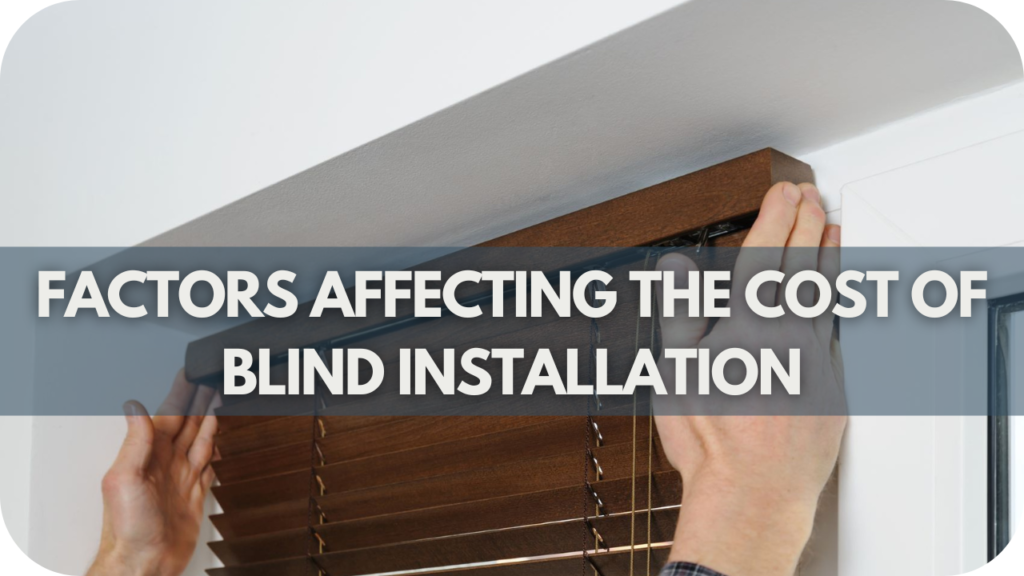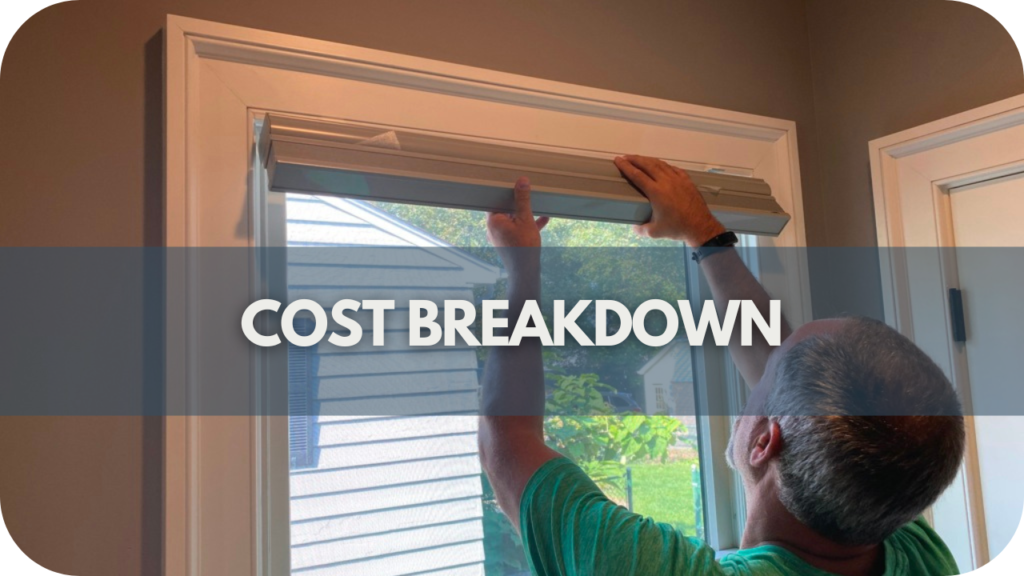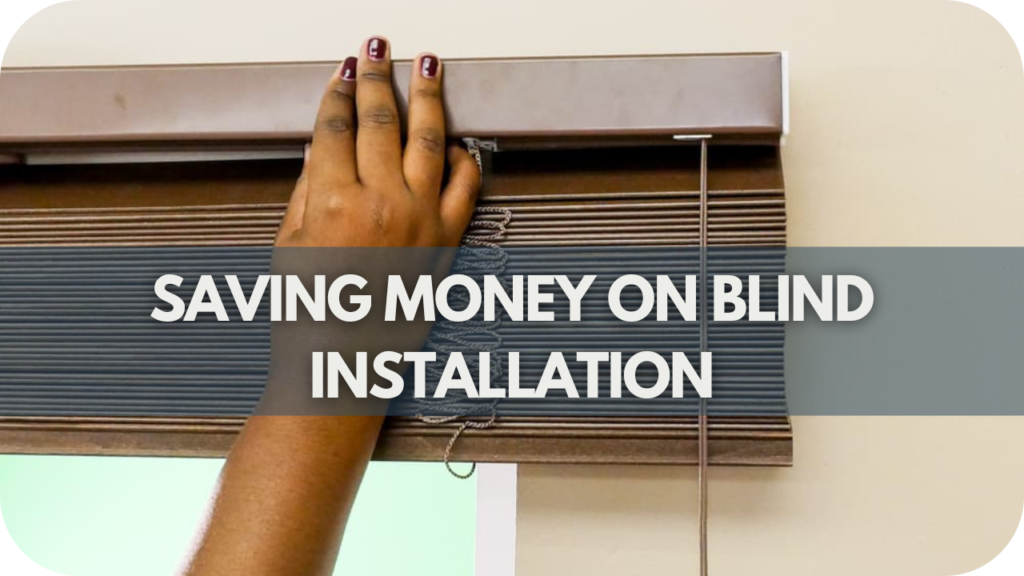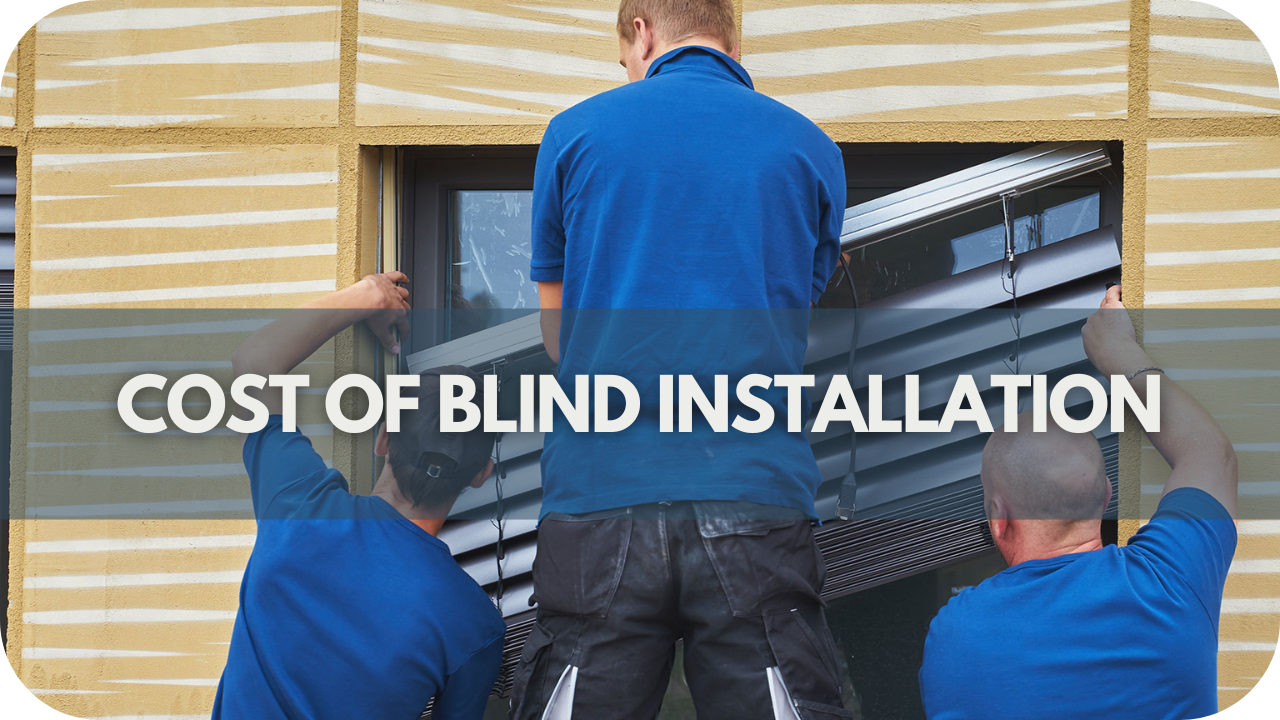Installing blinds can be daunting, especially when unsure about the costs involved.
Many homeowners are overwhelmed by hidden fees and unexpected expenses, making a simple project a financial headache.
In this guide, we break down the costs of blind installation, offer tips on what to expect, and provide practical ways to save money, ensuring your window treatments are beautiful and budget-friendly.
Factors Affecting the Cost of Blind Installation

Several factors can influence the overall cost of blind installation. Understanding these variables can help you budget more effectively and avoid unexpected expenses.
Here are some of the factors affecting the cost of blind installation;
- Type of Blinds: The cost varies significantly depending on the type of blinds you choose. Roller blinds are generally more affordable, while Roman and Venetian blinds can be pricier due to their design and materials.
- Material: Blinds made from natural wood or high-quality fabrics are more expensive than synthetic materials like PVC or aluminium. The choice of material affects the initial cost, longevity, and maintenance requirements.
- Size and Number of Windows: Larger or multiple windows will increase costs. Custom-sized blinds for uniquely shaped or oversized windows can also add to the expense.
- Installation Complexity: Easy-to-install blinds may not require professional help, but complex installations, such as motorised blinds or those needing custom fittings, often necessitate professional installation, adding to the cost.
- Labour Costs: Labour costs can vary depending on location and the installer’s expertise. Some companies include installation in the purchase price, while others charge separately.
- Brand and Quality: Premium brands often have a higher price tag due to their reputation and quality guarantees. Opting for a well-known brand can ensure better durability and warranty options.
- Customisation: Blinds tailored to fit specific window shapes, sizes, or design preferences generally cost more than standard off-the-shelf options.
Average Cost Breakdown

Understanding the average cost breakdown for blind installation can help you plan your budget effectively.
Here’s a detailed look at what you can expect to pay for different components of the installation process.
Cost of Blinds
The price of blinds varies widely based on type and material.
- Roller Blinds typically cost $20 AUD to $50 AUD per window. They are cost-effective, versatile, and available in various colours and patterns.
- Venetian Blinds: These can cost between $50 AUD and AUD 100 per window. Aluminium variants are usually cheaper, while wooden versions are more expensive but offer a classic look.
- Roman Blinds: Prices range from $60 AUD to AUD 150 per window. They are made from fabric and provide a soft, elegant appearance. They are often used in living rooms and bedrooms.
- High-End Options: Motorised or high-quality wooden blinds can exceed AUD 200 per window. These blinds offer advanced features such as remote control operation and are made from premium materials.
Installation Fees
Professional installation costs range from $30 AUD to AUD 100 per window.
- Standard Installation: Simple blind installations, such as roller or Venetian blinds, typically cost around $30 AUD to $50 AUD per window.
- Complex Installations: Motorised or custom-fitted blinds may require specialised installation, increasing the cost from AUD 75 to AUD 100 per window. These installations often involve additional electrical work or precise measurements.
Labour Costs
Labour costs vary depending on your location and the installer’s experience.
- Hourly Rates: On average, expect to pay around $50 AUD per hour for professional services. Highly experienced installers or those in metropolitan areas may charge higher rates.
- Inclusion in Fees: Some companies include labour in their installation fees, providing an all-in-one cost, while others itemise labour separately. It’s essential to clarify this when getting a quote.
Additional Features
Adding features like remote control operation, smart home integration, or special coatings can increase costs.
- Remote Control Operation: Depending on the system’s complexity, it typically adds $50 AUD to AUD 100 per window. This feature offers convenience, especially for hard-to-reach windows.
- Smart Home Integration: Costs can range from $75 AUD to AUD 150 per window. This lets you control your blinds via smartphone or voice commands, integrating with your smart home setup.
- Special Coatings: Blackout or UV protection coatings can add £20 to £50 per window. These coatings enhance the functionality of your blinds by blocking out light or protecting furnishings from UV damage.
Customisation and Special Orders
Custom-sized or uniquely shaped blinds generally cost more than standard sizes.
- Custom Orders: Expect to pay an additional 20% to 50% for custom sizes, designs, or particular fabric choices. Custom blinds are perfect for your windows and allow personalised design options.
- Special Shapes: Blinds for bay windows, arches, or other non-standard shapes will incur higher costs due to the bespoke manufacturing required. These blinds are tailored to fit unique window configurations, offering a seamless look.
Accessories
Additional accessories can enhance the look and functionality of your blinds.
- Valances and Cornices: These decorative elements can cost between $20 AUD and $50 AUD per item. They cover the top of the blinds, providing a finished look.
- Tiebacks and Holdbacks: These functional accessories range from $10 AUD to $30 AUD each. They add style and convenience. They help hold curtains or blinds in place, adding to the overall aesthetic.
How to Save Money on Blind Installation

Saving money on blind installation doesn’t mean compromising on quality. One effective way to cut costs is by opting for DIY installation. Many blinds come with straightforward instructions and necessary hardware, and online tutorials can guide you through the process if you have basic DIY skills.
Additionally, shopping sales, discounts, and promotions can yield significant savings. Look for deals during off-peak seasons or holiday sales, and consider buying in bulk for multiple windows to benefit from bulk discounts.
Another way to save is to choose standard sizes over custom ones, as custom blinds can be significantly more expensive. Many manufacturers offer a variety of standard sizes that fit most windows, reducing the need for costly custom orders.
It’s also wise to compare quotes from multiple installation companies to ensure you get the best deal. Ensure each quote includes a detailed cost breakdown, and don’t hesitate to negotiate or ask for price matching.
Another cost-saving option is to take advantage of bundled services. Some retailers offer packages that include blinds and installation at a reduced rate, helping you save on overall costs. Finally, consider investing in energy-efficient blinds.
Although they might have a higher upfront cost, they can save you money in the long run by reducing heating and cooling expenses. Look for blinds with insulating properties or reflective coatings to enhance energy efficiency.
Pros and Cons of DIY vs. Professional Installation
| Aspect | DIY Installation | Professional Installation |
| Cost Savings | Significant cost savings by eliminating labour fees. | Labour fees can significantly increase the overall expense. |
| Flexibility | Work on your schedule without waiting for an appointment. | Must coordinate with the installer’s schedule, which can be inconvenient. |
| Time Commitment | It can be time-consuming, especially for those unfamiliar with the process. | Professionals complete the job quickly and efficiently. |
| Risk of Errors | There is a higher risk of measurement or installation mistakes, potentially leading to additional costs. | Lower risk of errors due to professional expertise. |
| Expertise | Limited expertise may struggle with complex installations like motorised or custom blinds. | Professional skills ensure perfect fit and proper function, reducing the risk of errors. |
| Efficiency | Installation can take longer and may require more effort. | Job completed quickly and efficiently. |
| Precision | Ensuring precise measurements and cuts can be challenging. | Experienced professionals ensure precision. |
| Safety | Risk of injury from improper use of tools. | Professionals are trained to handle tools safely. |
| Customisation | Potential difficulty in achieving high levels of customisation. | Easier to achieve custom solutions with professional help. |
| Project Scale | Suitable for smaller projects or single windows. | Better suited for large-scale projects or multiple windows. |
Conclusion
In conclusion, understanding the costs and factors of blind installation can help you make informed decisions and save money.
Whether you choose DIY or professional installation, planning is key. For expert advice on quality blinds, visit Into Blinds Melbourne.
Contact us today for a consultation and transform your home with our stylish solutions.


